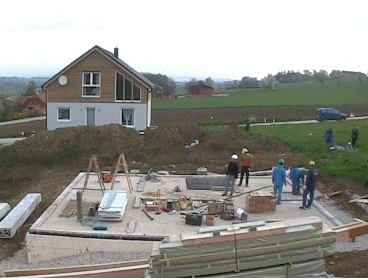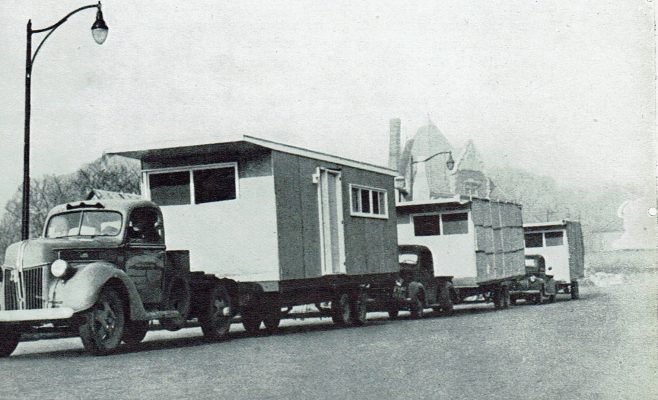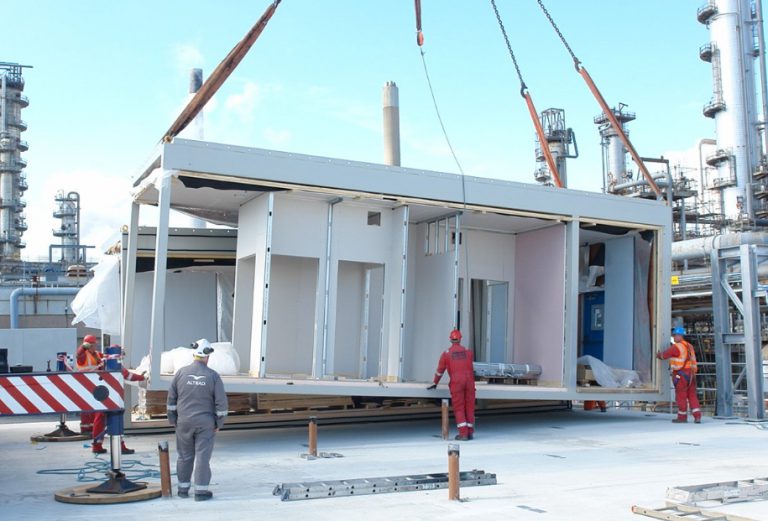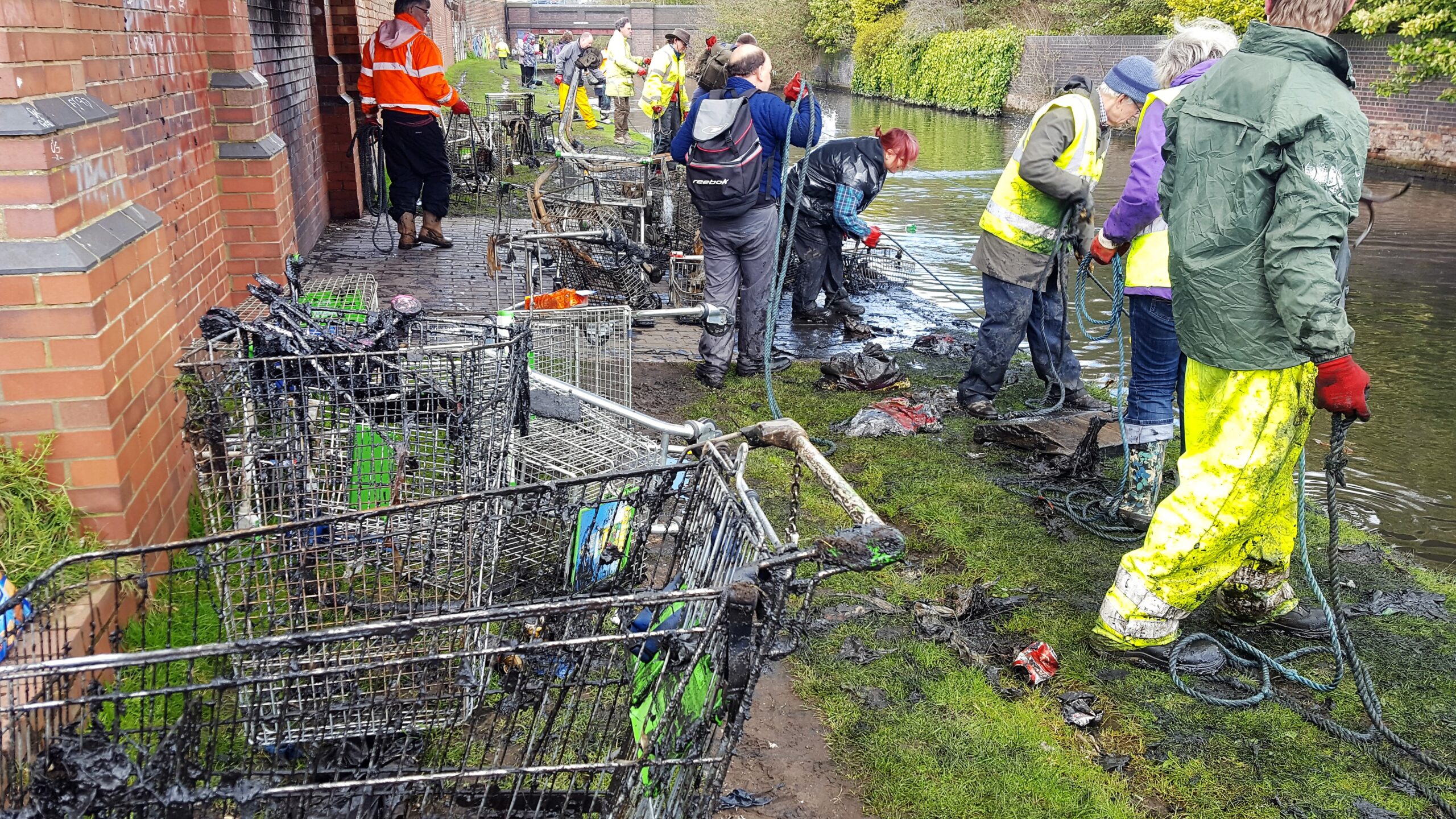Martyn
master brummie
45ft from the 453ft Birmingham Level to the 408ft Walsall LevelWhat was the drop across the eight locks, does anyone know?
45ft from the 453ft Birmingham Level to the 408ft Walsall LevelWhat was the drop across the eight locks, does anyone know?
Thank you!45ft from the 453ft Birmingham Level to the 408ft Walsall Level
When I read you comment about taking issue with a reference to Farmers Bridge, I thought you were going to comment about the confusion about the location of Framers Bridge Junction. For years the junction behind the ICC was described as Farmers Bridge Junction. That was not correct and I blame Bradshaw for this. In my 1904 Bradshaw's Canals and Navigable Rivers this was described as Farmers Bridge Junction but the actual junction was between the Newhall Branch of the BCN and the Birmingham and Fazerley Canal where the old Toll House is at the top of the Farmers Bridge flight of locks.A useful collection of images from various books.
I must take issue with Historic England's reference to Farmers Bridge wharf and although the first development of wharves did happen opposite the junction between the Lock flight and the Newhall Branch, the wharves that developed from Farmers Bridge along the Newhall Branch became known as the Crescent Wharves and were home to several canal carriers depots. Most notable occupants were the Shropshire Union Canal & Railways depot and their successors there, Fellows, Morton & Clayton. The last canal carrier based there made the transition to road haulage, in the 1940's, and the former warehouses were let out for other uses until the 1960's redevelopment of the site.
I'm curious because there is evidence that they actually crated a prefabricated timber house into their ship so they could assemble it readily upon arrival. So I'm investigating freight options for other belongings as well. If they were able to transport a house, who knows what other belongings they shipped? They certainly weren't travelling light! Cost does not appear to have been a consideration.Birmingham to Liverpool journeys were possible by railway in 1854, so it is possible they travelled by train, and their possesions, securely crated, came with them or by goods train. Their things would need to be packed for the sea journey, and it wouldn't make much sense to have to repack them at the port. It seems unusual to me to take all their possessions with them, many emigants sold up before leaving and bought again once in their new home, saving the cost of transport.
As Lloyd mentioned, rail was also an option at that time. I'm trying to get my head around the logistics of two families travelling together, with about 10 children between them, from Birmingham to Liverpool, in 1854. What were their transport options? How much could they potentially take with them? Considering that they travelled to Australia from Liverpool with a prefabricated timber house in the hold of the ship, I wonder whether they might have bought the house in Birmingham then barged it to Liverpool, or perhaps simply bought the house in Liverpool and had it delivered directly to the docks. It certainly would have been an expensive exercise whichever option they took.I would imagine so. The Birmingham & Fazley then Trent & Mersey trough Stoke on Trent to the Macclesfield and Peak Forest and Ashton canals get you to Manchester. The Bridgewater canal would then link up with Leigh Branch and the Leeds & Liverpool to finish.
See the CRT map here



 thurstongroup.co.uk
thurstongroup.co.uk
I've followed up on those prefabricated houses. There are certainly survivors of Henry Manning's creations around Adelaide and elsewhere, so it is quite possible that my ancestors bought a Manning flatpack. Very interesting, thank you.I don't know if you have seen these three links:

Prefabricated building - Wikipedia
en.wikipedia.org

A short history of prefabrication
Prefabrication is a method of producing standardised components off-site in a factory or workshop, that can be fitted together on-site. ...www.prefabmuseum.uk
but they might suggest that the hiouses transported was one of Henry Manning's creations
The History Of Modular Buildings | News | Thurston Group
The history of modular buildings is truly intriguing. 1837 was the first on-record example of a modular building and was only set to rise.thurstongroup.co.uk
There appears to have been a strong market for prefabricated "flatpack" houses for settlers in the colonies, with notable examples manufactured specifically for the task in London. It would have been fairly expensive to transport even a small house kit from London to Liverpool, but I don't believe cost would have been a consideration. As you suggest, train may have been a better transport option.Taking goods by narrowboat from Birmingham was limited to what could be packed into the hold of one or a pair of boats and would have also needed transshipment for carriage across the Mersey to Liverpool Docks. Carriage by train may have been a more practical option. The LNWR, in 1854 provided a service that might have been possible, probably with a partner such as Pickfords or Crowley.
Assessing what was transported to Australia would depend on what recollections the family has of what came from England. As to the pre-fabricated house, the maker of that house may be a guide. Birmingham might have been a city of many trades, but the cost of such a building needs to be considered as well as the reality of what was conveyed by the ship. There were timber merchants in Birmingham, but it would have been cheaper to buy the material at Liverpool.
Did the family have the finances for such transport costs or is this a memory handed down and embellished?
Later the development of corrugated iron in South Staffordshire became an important export item.
Hi, I'm researching my husbands family, the Worleys, they married into the knight family but I haven't got much info yet, can you fill in any gaps, I'd appreciate it, thanks, MaggieKnight & Canal
My KNIGHT's were all around Small Heath - Watery Lane, Westley Place etc. In 1901, they ran a coal yard in Westley Place but have not yet found the right location.
During my research at Bham Library, I came across the boat inspection records which licenced operators for the number of people to live on the boats. Attached is a picture of one of Thomas Knight's entries for the "Emily" showing he was licenced to carry manure - hey my ancestor was a s--t shoveller!View attachment 8991

I worked on a tunnelling / pipeline project where the pipeline terminated in Southall Gas yard, at the rear of the site was the Grand Union Canal.They have a clear up at the canals near me in London from time to time, all sorts of stuff gets pulled out, it's disgusting what some people will dump in there

 waterways.org.uk
waterways.org.uk
Having walked the entire BCN and Grand Union I can safely say that the Walsall Canal where this clean-up is taking place is the most rubbish strewn on the system. Why people think it's acceptable to dump tyres, kitchen cabinets, fridges, wheelie bins, pallets, traffic cones and, of course, shopping trolleys into the water is confusing to say the least.There is a clean up of the Tipton Canal this month by IWA if anyone is interested.
I myself have something else on that weekend, but they do look for volunteers.
Absolutely, I think it is called laziness, when folks do not dispose of such items responsibly, it is also very selfish and costly to the councils and waterways to put right. Unfortunately there have always been and will always be those who think this is acceptable behaviour.Having walked the entire BCN and Grand Union I can safely say that the Walsall Canal where this clean-up is taking place is the most rubbish strewn on the system. Why people think it's acceptable to dump tyres, kitchen cabinets, fridges, wheelie bins, pallets, traffic cones and, of course, shopping trolleys into the water is confusing to say the least.
Would anyone be able to help me understand whether the rubbish was simply tipped from the rubbish cart into the cargo holds of barges, or whether the rubbish was contained in some way for lifting and shifting?View attachment 176643
“Much of Birmingham's refuse used to be carried away by canal. It was the first collected by horse and cart and taken to a number of canalside loading points. This is the wharf near Salvage Turn on the Worcester and Birmingham Canal, close to the Gas Street Basin. Rubbish from this wharf was taken to a tip at Lifford. The wharf has a cobbled surface and the elegant gas lamp would now be an object for the collector, whereas at the time the picture was taken, in 1912, it was there for purely functional purposes. This section of the canal was so busy that 24-hour working was necessary and these gas lights were installed for illumination when dark. The builders merchants opposite obviously got their pipes by canal.”
Narrow boats at work, by Ware, Michael E, Publication date 1985
